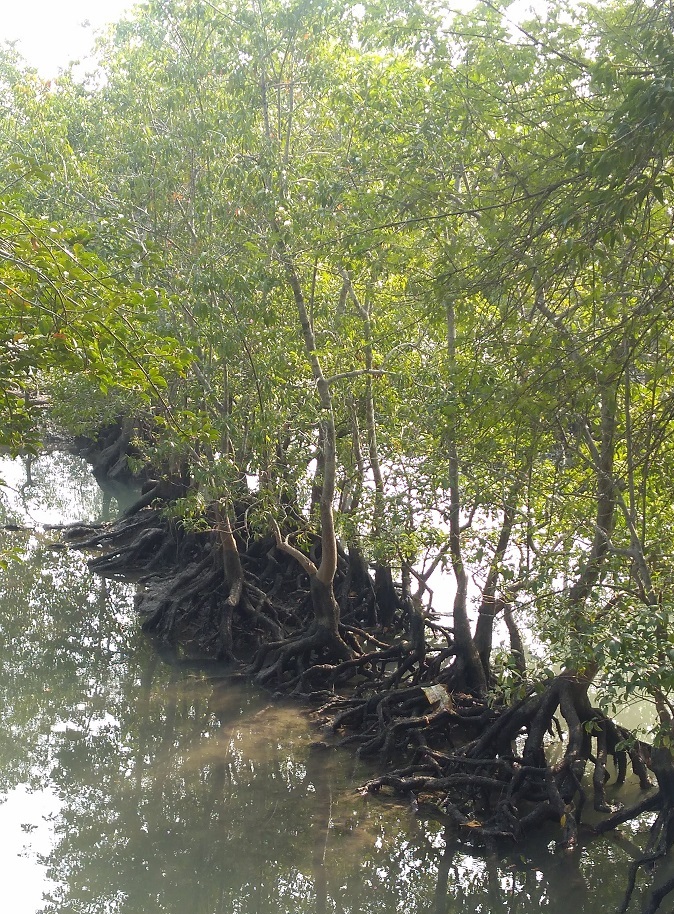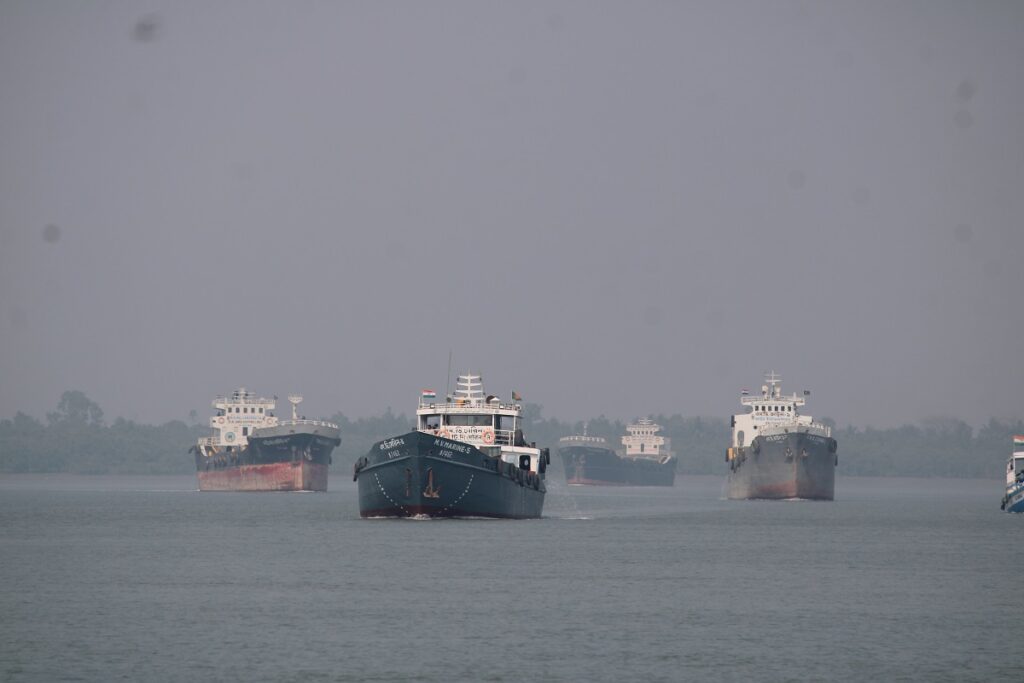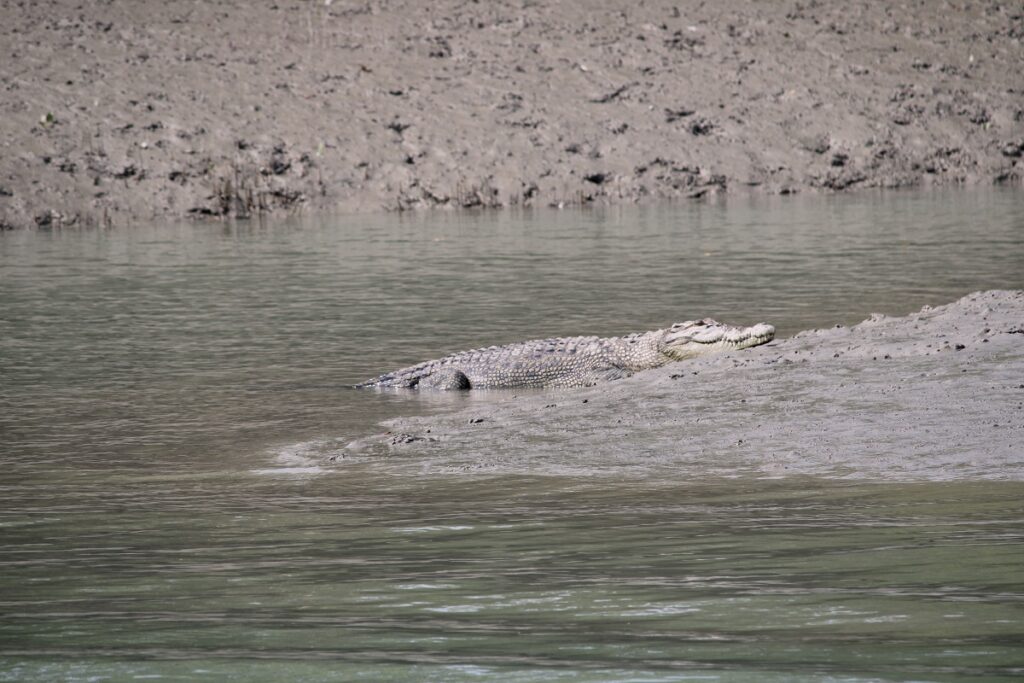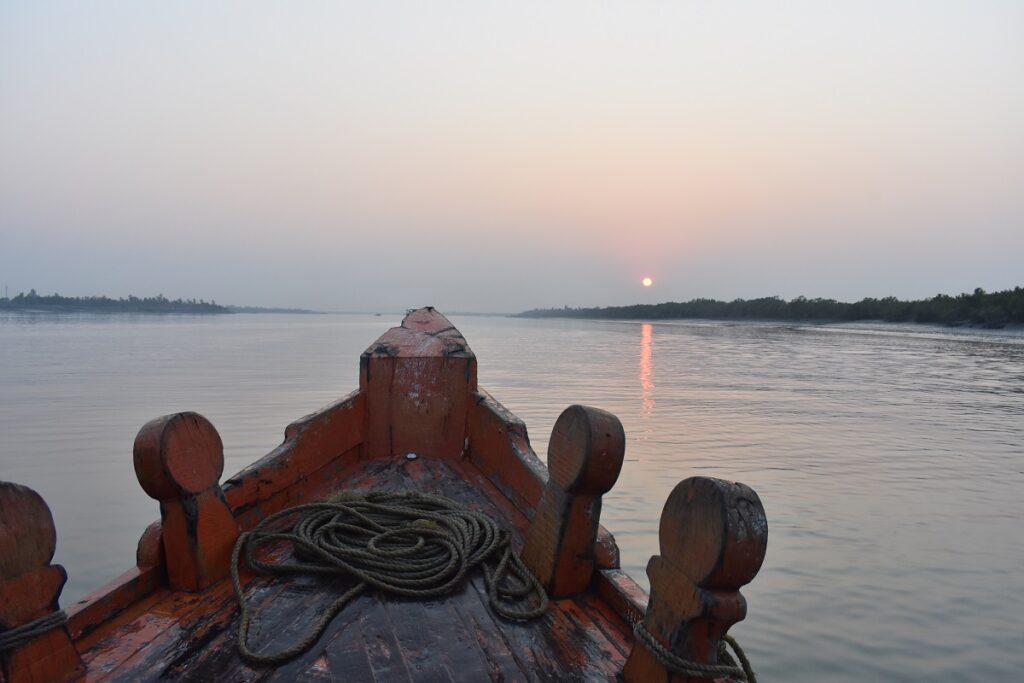In my quest for a low-cost adventure, I discovered the famous Sunderbans, which is home to the world’s largest population of Royal Bengal tigers. I finally arranged a trip to this wonderful place with a few friends in January of 2020. The best route to get to the Sunderbans is through Kolkata, so we flew in late at night for a short two-day trip.

We made a reservation with one of the Sunderban tour companies. We were a party of eight and the cost per person for the whole trip was just under Rs. 2500, after some bargaining. Inclusive of food and lodging, this is most likely the most cost-effective alternative.
At around 9 a.m., a 12-seater car arrived at our hotel in Kolkata and picked us up. To get to Godkhali Ferry Ghat, we had to drive 3 hours by road. We stopped for tea and breakfast along the way at a roadside dhaba. We resumed our trip after a 45-minute break. The roads became less smooth as we got farther away from the city. The trip lengthened somewhat as a result of this. We arrived at the ghat about 2:30 p.m. and promptly boarded a motor ferry.
With many seats lined in neat rows, the ferry resembled a bus on a cruise. The top of the ferry had a sun shade, but the sides were transparent. Our boat was now cruising through the delta waters, with vast swaths of thick forest on either side. The crew of the boat quickly pulled in a freshly prepared meal. Rice, veggies, two types of fish with pickle and papad filled up the entire plate. As the ferry sped over the channel, we savoured our meals. We also saw a few Indian deers drinking water on a distant river bank as the sun started to set. The water, which was surrounded by lush greenery, was now having a tint of orange, and the air became a little cool. It had all the makings of a picture-perfect moment.

Our ferry arrived at 4:00 p.m. and dropped us off in the Sukumari village. From the river ghat, the workers escorted us to our accommodation. We were given two mud cottages, each shared by four people. The cottages are usually only for two guests. However, due to a special request, we were given extra beds and were able to share the rooms. Each room had an attached toilet, a side table, a mirror, and mosquito nets. Due to the fact that it was a cold month, some extra heated blankets were also kept on the beds. Our itinerary only allowed for a one-night stay. Accordingly, the services were adequate.
We went for a walk in the village streets after 30 minutes of rest. Long stretches of mustard plants surrounded the tracks. We came to a halt by a small lake where a herd of cattle was drinking. We casually walked to a nearby village market, where we found a variety of handcrafted products. Miniature wooden dolls, wooden jewellery, and jute weaved handbags are among the items I recall purchasing. We also bought some freshly collected honey on the advice of a local. The honey was all pure, with no artificial preservatives, something we never see in the big cities. In addition, the majority of the goods can be purchased for Rs. 100 or so.
The first day came to a close with a delicious dinner at the cottage, followed by a bonfire and a lively dance performance by several local ladies.
We left our cottages early the next morning and went for a full-day boat cruise across the lush greenery of the Sunderbans. Permits are required to enter the Sunderban Tiger Reserve. While we went across the canal, the agency we were with arranged for the permits. On the riverbanks, we saw a variety of monkeys as well as Indian deers. One of the tourists who was carrying a binocular claimed to have spotted a wild boar too. A variety of birds were also visible. Crocodiles lying on the river side is also a common sight. The ferry even took us to a spot where we could see mangrove trees with roots that protruded above the water’s surface, as well as wet grey earth. We had always seen those trees in our textbooks, but this was a whole new experience.

We arrived at the Dobanki camp at 11 a.m., which was the first stop of the day. The camp is spread out over a broad area, with a netted pathway for visitors. It also has the well-known Canopy Walk. A watch tower, 500 metres from the entrance, overlooks a large section of the reserve. You can choose to pause at various levels of the tower. The reservoir we could see had very little water due to the winter season, and a few whistling ducks were swimming in it. We saw a few wild boars and colourful birds on our journey. However, we had yet to see the tigers, who were the day’s biggest draw. We spent 45 minutes at the tower, where we also saw a little deer walk towards the water. However, it wasn’t as exciting as we expected.
After 1.5 hours at Dobanki, we made our way back to the boat. The boat’s live kitchen was bustling when we returned because lunch was being cooked. Since the sun was shining brightly, the double decker boat had comfortable beds on the lower level where we could relax for a while in the shade.

The next stop was Sudhanyakhali, another camp. When we entered, the guide informed us that a tiger had been seen nearby the day before. This knowledge gave us a lot of optimism. The walk to the tower reminded me a lot of the Dobanki tour. We didn’t see a tiger this time too, but we did see a few crocodiles, a monitor lizard, and a herd of spotted deers. We returned to the boat after another hour of exploring. It was 4:30 p.m., and the boat crew was serving us hot tea because the weather was becoming cooler. As we began our return trip, the whole sky was vibrant orange. Everyone was exhausted and loving the cool wind and the slow-moving sail. It was a quiet trip this time.
We were dropped off in Godkhali, where we were picked up by our tour operator and driven back to Kolkata. We were back at our hotel by 9 p.m., putting our wonderful trip to a close. Despite the fact that we did not see a tiger, the boat trip and stay in the village were well worth it. So, if you’re looking for a quick and inexpensive tour, the Sunderbans could be a good choice. The boats also provide night stays which can be fun. If you’re lucky, you might also see the Royal beast.
Tips
- Carry enough warm clothes if you are visiting the delta during the winter months.
- Always have some cash handy. Very few people use online payment apps in these villages.
- Book your trip with a travel operator as it is much cheaper.
